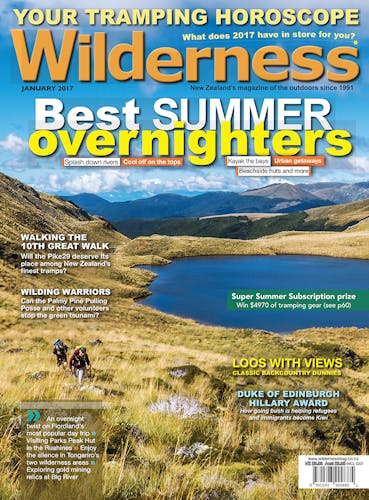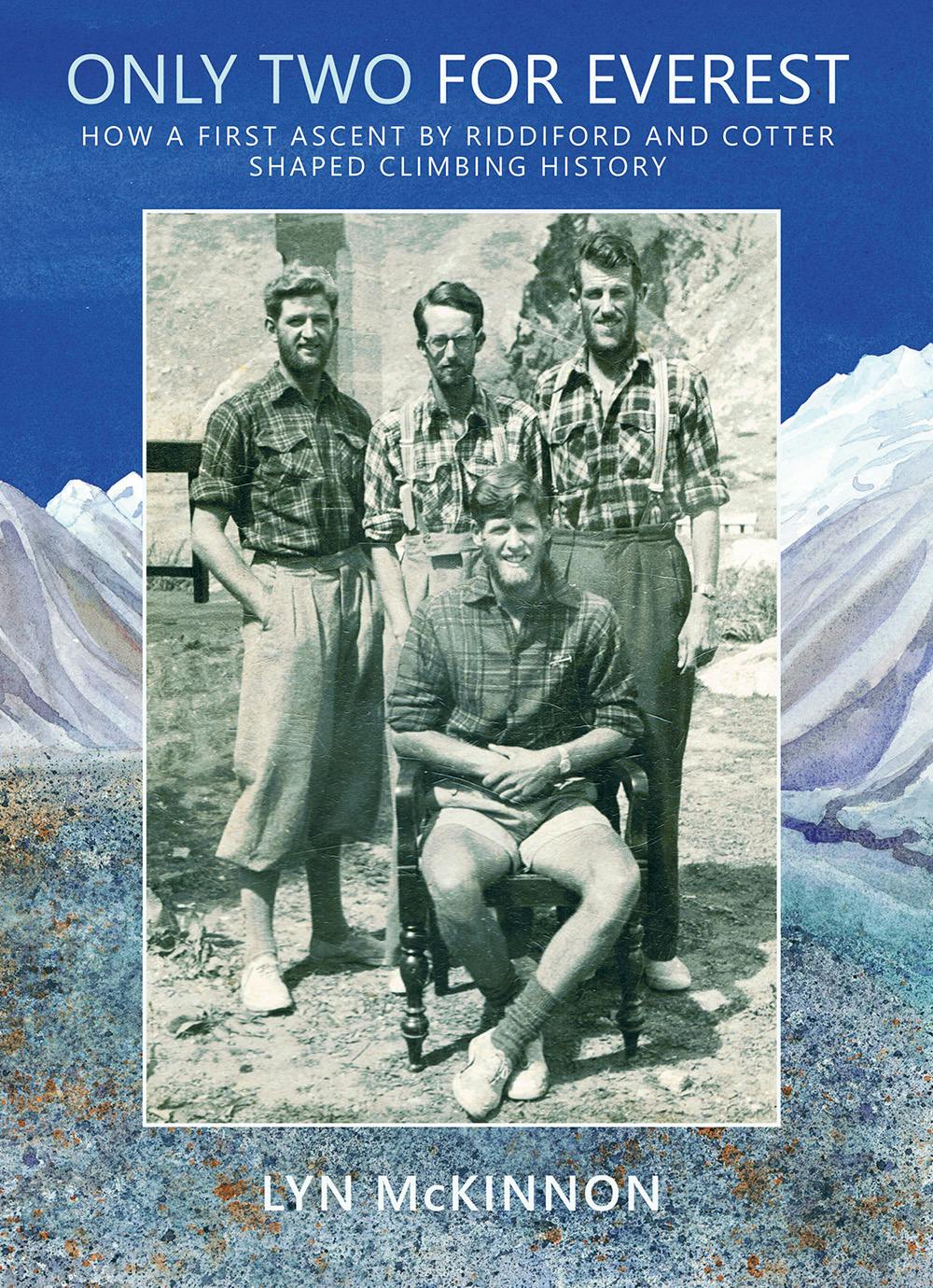How a first ascent by Riddiford and Cotter shaped climbing history
By Lyn McKinnon
Otago University Press, $49.95
FROM THE first look at this book there is a hopeful expectation of something previously unknown being revealed. Yet there is also a wariness that it might topple, or at best, smudge, the reputation of a New Zealand icon.
It begins with the cover which has a photograph of four men, yet a title ‘Only two for Everest’. Only two of these four, so which will it be and why does it matter?
Of the four pictured, only one will be immediately recognisable: that’s Ed Hillary, known ubiquitously as being the first man to conquer Mt Everest. Along with him on the successful May 1953 Everest Expedition was another in the photograph: George Lowe, who will have recent public recognition from Hillary, the TV programme about Sir Ed. But the other two? In the middle is Earle Riddiford, seated is Ed Cotter. These are not the two for Everest, but they obviously have an involvement, but what is it?
Unlike a myriad of mystery novels, what author Lyn McKinnon reveals is not fiction, but fact and it involves a period of New Zealand alpine history when a relatively small group of men were becoming recognised around the world in skill, technique, stamina, desire and ego as amongst the most accomplished to be found.
And that’s what happened; these four were ‘found’ by the British who in the 1950s were mounting a series of expeditions to the Himalaya in a frantic bid to be the first to summit Everest.
In 1951, Earle Riddiford, Ed Cotter, George Lowe and Ed Hillary, took part in the first New Zealand Himalayan Expedition to the Garwhal Himalaya. It was a private expedition, financed mostly by the members, especially Riddiford, the New Zealand Alpine Club and with donations of gear and food from a number of New Zealand companies.
This expedition was successful in that Riddiford and Cotter, along with their sirdar Pasang Dawa Lama, climbed the target summit of Mukut Parbat, 7242m.
To reach the summit they had to traverse the summit ridge – a section that apparently Hillary and Lowe had viewed with distaste – which meant a balanced climb, crampons either side of the ridge, with 1500m drops, for over 244m. Quite a feat, but both Cotter and Riddiford were renowned for their balance.
Mainly because of the New Zealanders success on Mukut Parbat, recognition of their value to a British expedition led to a telegram being sent to the group whilst still in India before leaving for home. It was a message from the NZAC telling them that Eric Shipton, leader of a planned 1951 British reconnaissance of Mt Everest, had offered the New Zealanders two places in his group. It was stupendous news, but which two should accept?
Hillary pronounced himself fit and able and thought he should go, Lowe was very keen. Riddiford felt he should go as he had been so involved with the Mukut Parbat expedition and had summited the mountain. Cotter, by all accounts, left it to the others to decide. Besides, there was a cost involved: the New Zealanders had to take their own food and equipment and, of the four, Cotter was the least inclined to do this. There was a fair bit of heat, strong words and self belief and Riddiford and Lowe fell out. Eventually, Hillary and Riddiford accepted Shipton’s invitation.
From being a close group of high altitude mountaineers, one invitation and one night of argument led to a lifetime of rancour and ever distant relationships between the men. Books by both Hillary and Lowe failed to mention, either at all, or to any honest extent, either Riddiford or Cotter. Yet, these two men had paved the way of recognition and acceptance for the other two.
Later, in 1952, Hillary joined a further British Himalayan Expedition under Shipton in a failed attempt to climb Cho Oyu, 8188m. Lowe and Riddiford went along on that one.
Then, in 1953, Hillary, again with Lowe the only New Zealanders, as Riddiford was not invited, were on the British Mount Everest Expedition, this time under John Hunt. On May 29, Hillary and Tenzing Norgay became the most celebrated and well known mountaineers ever by summiting Everest, 8848m.
Lyn McKinnon set out to write a book about Ed Cotter. She was captivated by his outdoor skills, his tenacity, his lifetime fitness, his entrepreneurial endeavours and especially his humility. Cotter also left a mountaineering legacy for his family, with son Guy becoming an accomplished mountaineer and owner of guiding company Adventure Consultants. Along the way, she realised the part that Earle Riddiford had played and so the book expanded to cover his mountain exploits too and his life as a landowner and lawyer.
The revelations of the book are less that the so called ‘glory boys’ of New Zealand mountaineering – Hillary and Lowe – were not deserving of their climbing recognition, but that neither had been gracious towards their Garhwal climbing partners, particularly in subsequent books and talks. Hillary doesn’t escape, but Lowe gets short shrift.
And McKinnon leaves hanging over a deep crevasse the unanswerable question of whether any New Zealander, let alone Hillary and Lowe, would have been invited to conquer Mt Everest, if Riddiford and Cotter hadn’t first successfully proved the mettle of the country’s climbers on Mukut Parbat.








